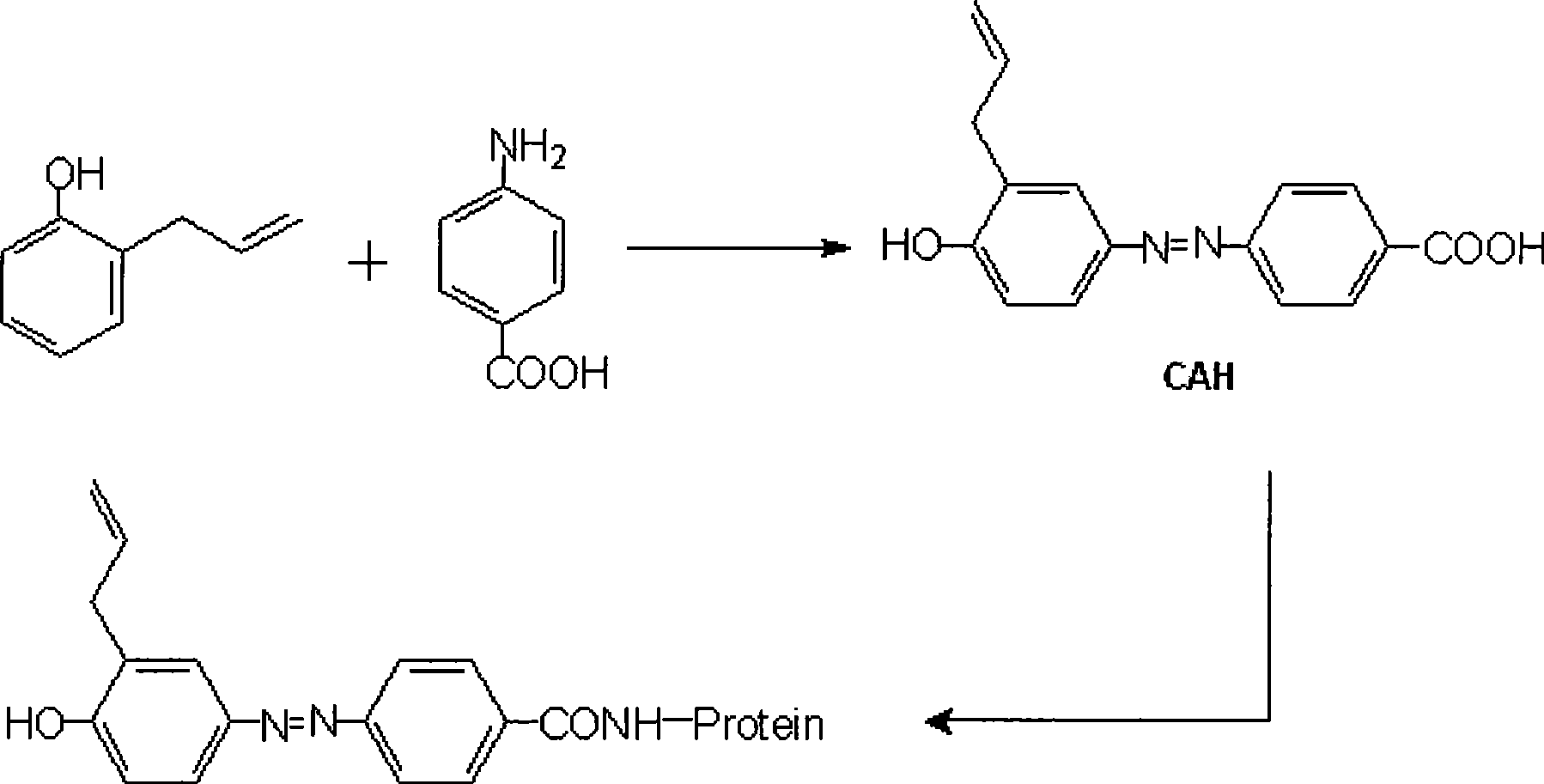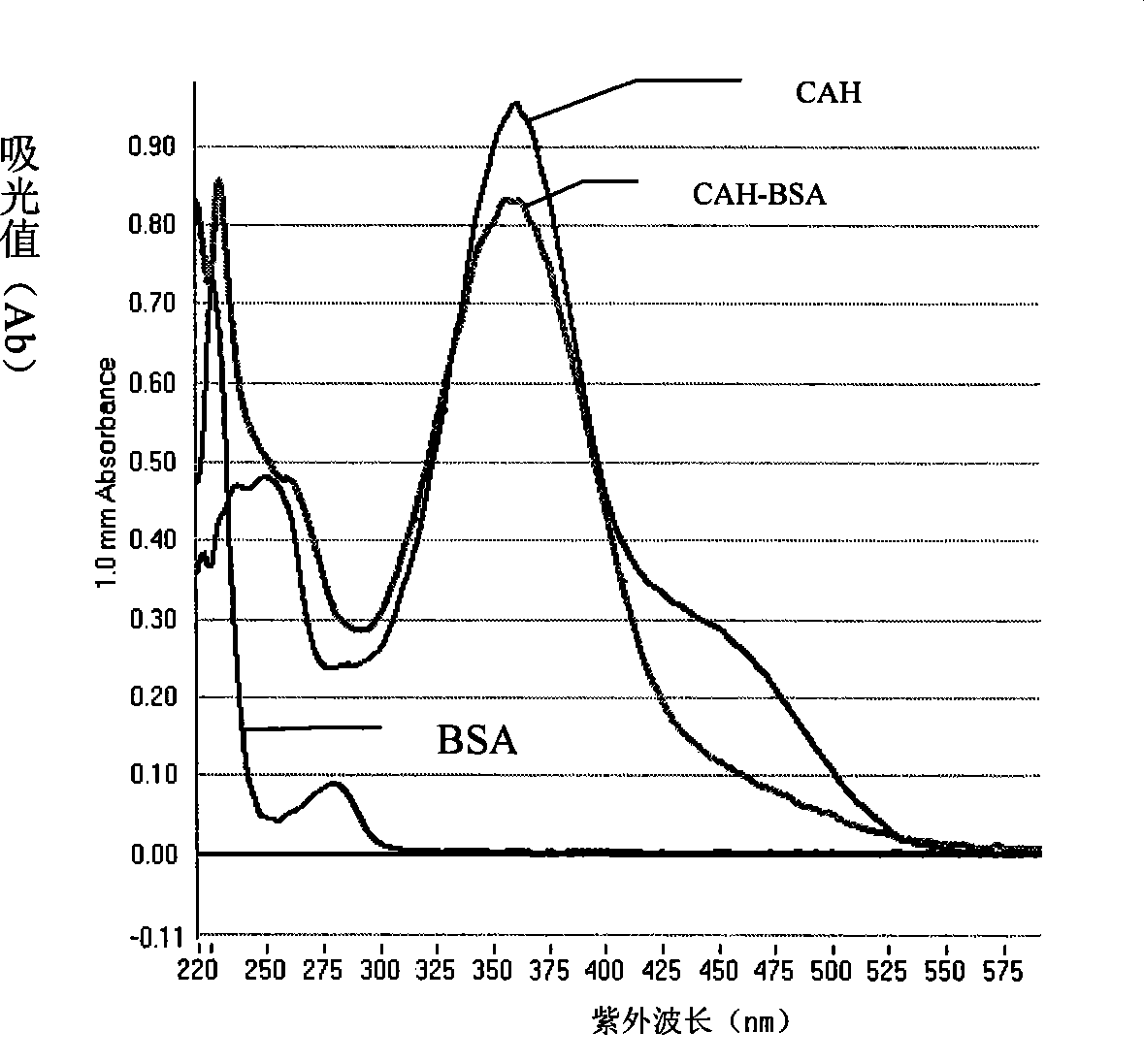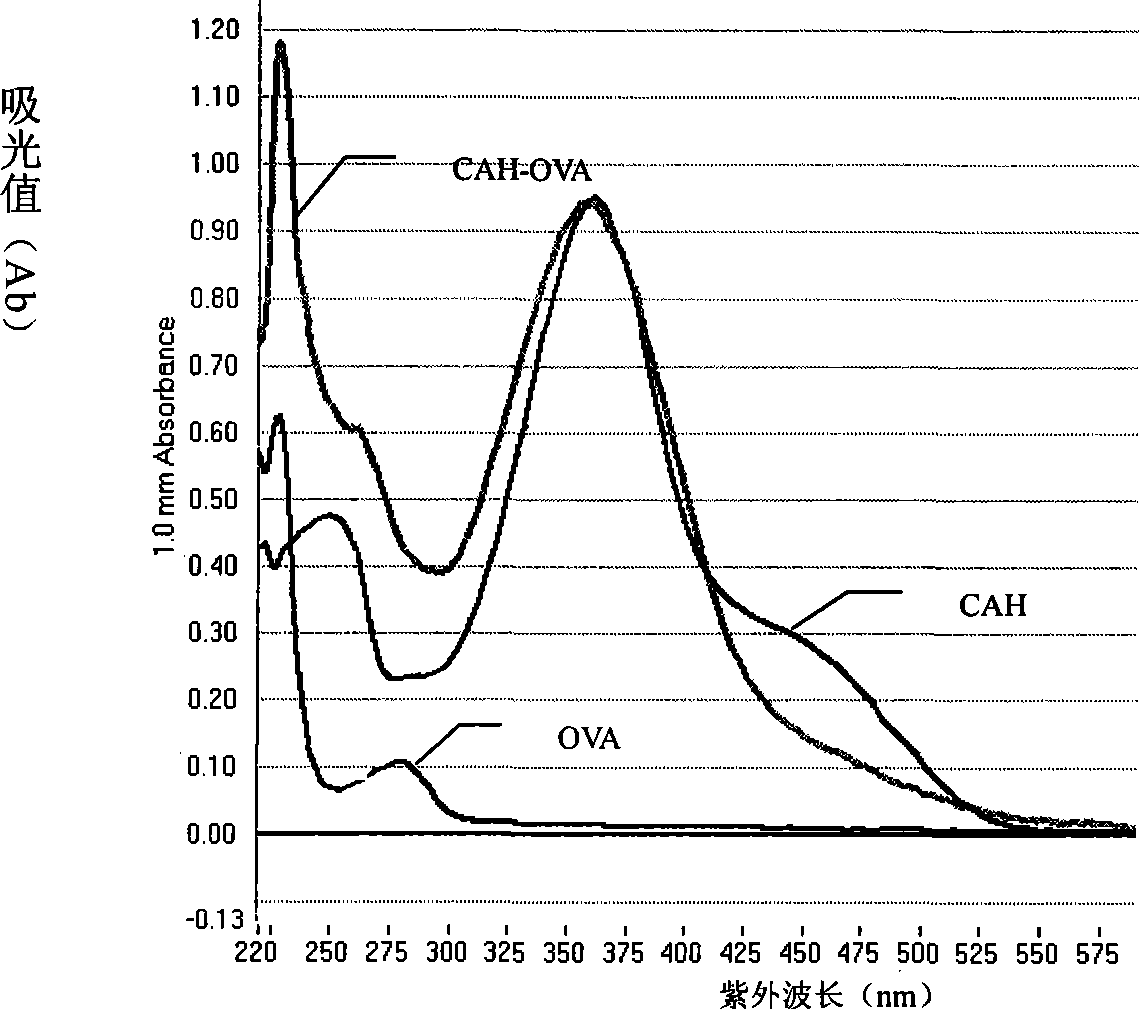Reagent kit for detecting o-allyl phenol and its special antibody
A technology of o-allylphenol and kits, which is applied in the field of kits for detecting o-allylphenol and its special antibodies, can solve the problems of difficult measurement of a large number of samples, expensive experimental equipment, high cost of reagents, etc., and achieve a high derivatization rate High, high detection limit, good effect
- Summary
- Abstract
- Description
- Claims
- Application Information
AI Technical Summary
Problems solved by technology
Method used
Image
Examples
Embodiment 1
[0048] Embodiment 1, the synthesis of o-allylphenol antigen (CAH antigen)
[0049] The schematic diagram of the synthesis of o-allylphenol antigen is as follows figure 1 shown.
[0050] 1. Synthesis of o-allylphenol immune antigen (CAH-bovine serum albumin (BSA))
[0051]1. Diazotization:
[0052] (1) Take 30 mg of o-allylphenol, dissolve in 1 ml of methanol, dilute to 5 mL with distilled water, and stir magnetically at room temperature.
[0053] (2) Take 40mg of p-aminobenzoic acid, dissolve it in 1ml, 1M NaNO 2 1M HCl was added dropwise, and the reaction was terminated when the starch potassium iodide test paper turned blue.
[0054] (3) Slowly add the solution obtained in step (2) dropwise to the solution obtained in step (1) under constant stirring, and the reaction is complete after 12 hours at 4°C. When the pH value is adjusted to 2-3, a large amount of brick red precipitates out , centrifuge the precipitate; dissolve the precipitate in distilled water, adjust the p...
Embodiment 2
[0072] Example 2. Preparation of ortho-allylphenol monoclonal antibody and its identification
[0073] 1. Preparation of monoclonal antibody
[0074] (1) Establishment of hybridoma cell lines
[0075] 1. Animal immunity
[0076] The immunogen CAH-BSA was dissolved in 0.5 mL of normal saline, and an equal volume of complete adjuvant was added to make an immunogen emulsion, and 6-week-old female Balb / c mice were immunized. The second immunization was performed 4 weeks later, and the third immunization was performed two weeks later, using an immunogen emulsifier prepared by adding an equal volume of incomplete adjuvant. On the 10th day after the third immunization, the antibody titer in the mouse serum was measured by indirect ELISA, and the one with the higher titer was subjected to the next step of cell fusion.
[0077] 2. Cell Fusion
[0078] Spleen of Balb / c mice immunized with CAH-BSA was aseptically obtained to prepare spleen cell suspension. Draw separately containing...
Embodiment 3
[0120] Example 3, Preparation of o-allylphenol polyclonal antibody
[0121] (1) Balb / C female mice aged 8-10 weeks were used as experimental animals. Experimental immunization dose: 0.25-2.0 mg / kg for basic immunization, and 0.5-2.0 mg / kg for booster immunization.
[0122] (2) Basic immunization: Dilute the CAH-BSA immune antigen obtained in Example 1 with sterile water, add an equal volume of Freund's complete adjuvant after filtration through a sterile filter, and fully emulsify until dripped into water without spreading. The emulsified immune antigen was injected subcutaneously into the animal at multiple points on the back, and 0.2 mL was injected.
[0123] (3) Booster immunization: use incomplete Freund's adjuvant to emulsify the immune antigen, the method is the same as (2). Booster immunization is carried out every 3-4 weeks, and the abdominal cavity and the back are injected alternately. From the third immunization, on the 8th-10th day after each immunization, blood ...
PUM
 Login to View More
Login to View More Abstract
Description
Claims
Application Information
 Login to View More
Login to View More - R&D
- Intellectual Property
- Life Sciences
- Materials
- Tech Scout
- Unparalleled Data Quality
- Higher Quality Content
- 60% Fewer Hallucinations
Browse by: Latest US Patents, China's latest patents, Technical Efficacy Thesaurus, Application Domain, Technology Topic, Popular Technical Reports.
© 2025 PatSnap. All rights reserved.Legal|Privacy policy|Modern Slavery Act Transparency Statement|Sitemap|About US| Contact US: help@patsnap.com



